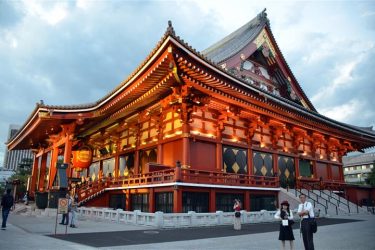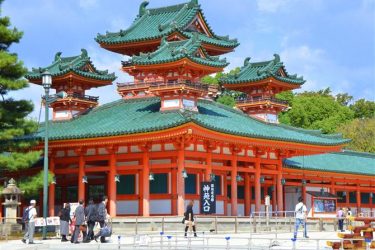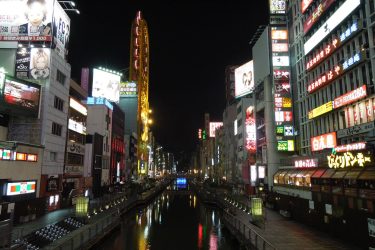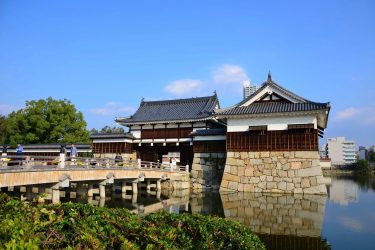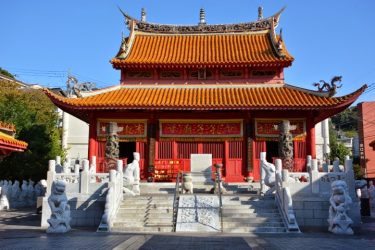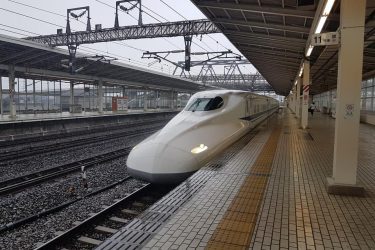Travellers can find a variety of cultural, natural, and gastronomic attractions in Japan, which is a fascinating and distinctive travel destination. The nation is renowned for its stunning natural scenery, historic temples and shrines, and mouth-watering cuisine.
Tokyo, the vibrant capital city that gives visitors an insight into contemporary Japanese culture, is one of the most well-liked travel destinations in Japan. Tokyo is renowned for its thriving urban culture, first-rate retail, and cutting-edge technology.
Other well-liked travel destinations in Japan include Hokkaido, the country’s most northerly island, which is renowned for its breath-taking natural beauty and winter sports, as well as Kyoto, the former imperial capital of Japan and the location of many of the country’s most famous temples and gardens. Hiroshima is also a popular tourist destination.
Sushi, ramen, and many other popular dishes are among the delectable and distinctive cuisines of Japan. Visitors can browse traditional Japanese food markets, enrol in cooking workshops, or eat at Michelin-starred establishments.
Overall, Japan is a fascinating and varied tourist destination that provides guests with a plethora of cultural, natural, and gastronomic attractions. Japan has plenty to offer everyone, whether they are interested in historic temples, cutting-edge cities, or breath-taking natural settings. In this article, we will give you what you should do and see when you visit Japan.
Visit Tokyo, Japan
Travelers can find a wide variety of cultural, culinary, and entertainment attractions in the bustling and interesting city of Tokyo. Modern architecture, cutting-edge technology, and a bustling street life are all hallmarks of the city.
The exploration of Tokyo’s diverse neighborhoods, each with its own distinctive personality and attractions, is one of the city’s highlights. The fashionable areas of Shibuya and Harajuku, noted for their fashion and tourists may explore all young culture, as well as the ancient area of Asakusa, home to the renowned Senso-ji Temple.
The Tsukiji Fish Market, one of the biggest fish markets in the world, is another well-liked tourist attraction in Tokyo. Visitors can enjoy mouth-watering sushi, watch the daily auction of fresh seafood, and browse the market’s numerous stalls and businesses.
The Tokyo National Museum and the Mori Art Museum are only two of the top museums and galleries in Tokyo. The city offers a variety of entertainment alternatives, from conventional Kabuki theatre to modern music and fashion.
Tokyo offers a special fusion of modernity and heritage, as well as a variety of cultural, culinary, and entertainment attractions, making it a must-visit location for anybody visiting Japan.
Visit Kyoto, Japan
One of the most well-liked tourist sites in Japan is Kyoto, which is renowned for its numerous ancient temples and gardens. The city’s numerous attractions can be explored by tourists, including the Kiyomizu-dera Temple, which gives breath-taking city views from its hilltop perch, and the Fushimi Inari Shrine, well-known for its countless torii gates.
The Golden Pavilion, a temple wrapped in gold leaf, and the tranquil Arashiyama bamboo grove are two more must-see sights in Kyoto. Visitors can also visit the Gion neighbourhood, where geisha and maiko can be seen strolling the streets.
Foodies will also appreciate discovering Kyoto’s various culinary delights, which include local cuisine like kaiseki ryori, a multi-course feast that displays the flavours of the season, as well as traditional Japanese sweets and tea.
The neighboring city of Nara, which is home to numerous ancient temples and shrines, as well as the renowned Todai-ji Temple, which holds the largest bronze statue of Buddha in the world, are also excellent starting points for exploring the surrounding area from Kyoto.
Take a Japanese Cooking Class
Learning about Japanese food and culture can be accomplished by enrolling in a Japanese cooking class while visiting Japan. Visitors can take classes from skilled chefs who are eager to impart their knowledge on how to prepare traditional Japanese foods like sushi, tempura, and udon noodles.
All levels of cooking experience can be catered to in Japanese cooking classes, which can be held in a variety of locations, including professional kitchens and private homes. Classes frequently include both practical training in cooking methods and a trip to a nearby market to learn about the items used in Japanese cuisine.
Taking a cooking class in Japan may teach you how to prepare delectable Japanese foods and also provide your insight into Japanese culture and customs. Traditional Japanese hospitality and etiquette are frequently incorporated into cooking workshops, and instructors may also give anecdotes and insights about the origins and significance of particular foods.
Overall, taking a Japanese cooking class in Japan can help you develop a deeper understanding of Japanese food and culture.
If you would like to take a Japanese cooking class, click here or on the Klook image below to select from one of our preferred suppliers.
Visit Hokkaido
The northernmost island in Japan, Hokkaido, is renowned for its stunning natural scenery, mouth-watering seafood, and wintertime sports. Visitors can visit the breath-taking national parks on the island, such as Shiretoko National Park, which has gorgeous coastlines and uncommon fauna, and Daisetsuzan National Park, which has hiking trails and hot springs.
Hokkaido is a well-known location for skiing and snowboarding in the winter, with a number of top-notch ski resorts offering powdery slopes and breath-taking mountain views. Traditional winter pastimes like ice fishing, snowshoeing, and basking in outdoor, hot springs are also available to tourists.
Fresh salmon, crab, scallops, and other seafood are among the delectable seafood specialties of Hokkaido. In seafood markets, sushi restaurants, and izakayas (Japanese bars), visitors can sample regional cuisine.
Sapporo, famous for its beer and snow festival, and Otaru, a historic town with a gorgeous canal and glassblowing studios, are two more well-known tourist destinations in Hokkaido. In conclusion, Hokkaido provides travelers interested in seeing Japan’s natural beauty and winter sports with a distinctive and remarkable experience.
Visit Osaka in Japan
One of the biggest cities in Japan, Osaka is renowned for its vibrant environment, mouth-watering cuisine, and historical landmarks. The Osaka Castle, a well-known landmark of the city that dates back to the 16th century, and the Osaka Aquarium Kaiyukan, one of the largest aquariums in the world, are just two of the many attractions that tourists can discover in the city.
The city of Osaka is famous for its street food, including takoyaki (octopus balls), okonomiyaki (savoury pancakes), and kushikatsu (deep-fried skewers), which food enthusiasts will also enjoy exploring. Additionally, the city is home to numerous Michelin-starred eateries that serve a variety of Japanese and international cuisine.
Additionally, visitors can take pleasure in shopping in the city’s numerous malls and shopping areas, such as Shinsaibashi and Namba. The Dotonbori district comes to life in the evening with neon lights, eateries, and bars.
Overall, Osaka is a bustling and fascinating city with a wide range of attractions, from historical sites to delectable cuisine and shopping.
Visit Hiroshima in Japan
The city of Hiroshima, which lies in western Japan, is renowned for its somber past, lovely gardens, and mouth-watering cuisine. The Hiroshima Peace Memorial Museum, which details the effects of the atomic bomb that was dropped on the city in 1945, provides visitors with information about the city’s tragic past.
The Atomic Bomb Dome, a UNESCO World Heritage Site that serves as a symbol of the city’s resiliency and desire for peace, is one of Hiroshima’s most well-liked attractions. The park also contains other notable landmarks including the Hiroshima Peace Memorial.
Hiroshima not only has historical sites but also lovely gardens like Shukkei-en Garden and the Hiroshima Castle Garden. Furthermore, tourists can try the city’s well-known okonomiyaki, a savory pancake made with a variety of ingredients.
In general, Hiroshima is a must-visit location for anybody visiting Japan since it offers a distinctive fusion of history, culture, and natural beauty.
Explore Nagasaki in Japan
On the Japanese island of Kyushu, the city of Nagasaki is a significant historical site known for its amazing fusion of cultures and steadfast resiliency.
Most notably, Nagasaki sadly suffered an atomic bombardment on August 9, 1945, which forever changed the course of the city’s history. Today, the Peace Park and Nagasaki Atomic Bomb Museum act as somber reminders of the devastating effects of nuclear war while promoting world peace and disarmament.
Beyond this depressing chapter, Nagasaki has a distinctive cultural heritage that was shaped by its function as Japan’s port of entry throughout its period of isolation. Glover Garden, a collection of late 19th-century Western-style homes in the city, serves as a reminder of the international influence present in Nagasaki at the time. Another historical treasure is the Oura Church, which is Japan’s oldest still-existing Christian church. Nagasaki also played a significant part in the spread of Christianity in Japan.
The colorful Nagasaki Kunchi Festival, which takes place every October and features intricate traditional dances and music, is a celebration of the city’s rich cultural diversity. The picturesque harbor of Nagasaki, which is bordered by steep terrain, adds to the city’s attraction and creates a mesmerizing synthesis of historical reflection, cultural fusion, and natural beauty.
Visit Mount Fuji
Japan’s highest mountain, Mount Fuji, is a well-known national emblem. Visitors to the area frequently take day trips to Mount Fuji, which is only a few hours from Tokyo.
Visitors can trek to Mount Fuji’s summit in the summer, which provides breath-taking views of the surroundings. The walk can be difficult, though, and calls for the right gear and preparation.
There are other viewing locations near Mount Fuji, including as Lake Kawaguchi and Hakone, that provide stunning views of the summit for those who would like a more leisurely experience.
Since there are so many ski resorts near Mount Fuji’s base, it is also a well-liked place to ski and snowboard during the winter.
Overall, anyone visiting Japan should make sure to visit Mount Fuji. Mount Fuji is a breath-taking sight that displays Japan’s natural beauty; whether you hike to the top or just take in the sights from a distance.
Go on a Bullet Train in Japan
One of the fastest and most exhilarating modes of transportation in Japan is the Shinkansen, sometimes referred to as the bullet train. The high-speed trains connect major cities throughout the nation, including Tokyo, Kyoto, Osaka, and Hiroshima.
The experience of riding a bullet train is both a practical and cultural method to travel. The trains have a reputation for being on time, being spotless, and being comfortable, with roomy seats, spotless interiors, and on-board services like food and drinks.
The stunning scenery of Japan and famous sites like Mount Fuji and the Himeji Castle can also be seen from the bullet train.
In conclusion, taking the bullet train is a must-do activity for tourists to Japan. It provides a distinctive perspective on the culture, history, and natural splendor of Japan and is a practical and entertaining mode of transportation.
Visit the Miyajima Island
Itsukushima, commonly known as Miyajima Island, is a little island close to Hiroshima in western Japan. Its torii gate, which is renowned for appearing to float on the water during high tide, and Itsukushima Shrine are both UNESCO World Heritage Sites.
Visitors to Miyajima may visit the island’s ancient temples and shrines, ride a beautiful cable car to Mount Misen for expansive vistas, and savor regional specialties including okonomiyaki made in the manner of Hiroshima and oysters.
Watching the sunset behind the torii gate is one of the most well-liked pastimes on Miyajima Island and is a genuinely magnificent sight. A trip along the beach at night will allow visitors to view the gate lit up by spotlights.
Overall, Miyajima Island is a must-see location for anyone visiting Hiroshima or the western part of Japan. Visitors will be impressed by the special combination of natural beauty, history, and culture that it offers.
Festivals in Japan
Japan is a country rich in cultural traditions and festivals that exquisitely display the history, spirituality, and creativity of the nation. These festivals provide a glimpse into Japan’s character with their intriguing fusion of traditional ceremonies and contemporary revelry.
Millions of people visit parks for Hanami celebrations under blooming cherry trees during the cherry blossom season, or “Sakura,” which is celebrated across Japan. This appreciation of nature’s beauty represents rebirth and impermanence.
One of Japan’s most well-known events, the Gion Matsuri in Kyoto dates back more than a thousand years. It displays Japan’s cultural heritage with big processions, extravagant floats, and a bright display of traditional clothing.
The Tanabata Festival, sometimes called the Star Festival, honors the romance of two celestial deities, which represented by the colorful streamers that are draped across city streets. People express wishes for their own love and happiness on this day.
The Buddhist holiday of Obon, which celebrated throughout Japan with the mesmerizing Bon Odori dances, honors the spirits of departed ancestors. It is a time for gatherings with family and remembering the past.
The Sapporo Snow Festival transforms Hokkaido into a wonderful playground with its massive ice sculptures and lit snow buildings.
These and other celebrations highlight Japan’s respect for tradition, coexistence with the environment, and artistic expression. They encourage both locals and visitors to take part in the nation’s cultural mosaic, fostering lifelong memories and expanding knowledge of Japanese culture.





